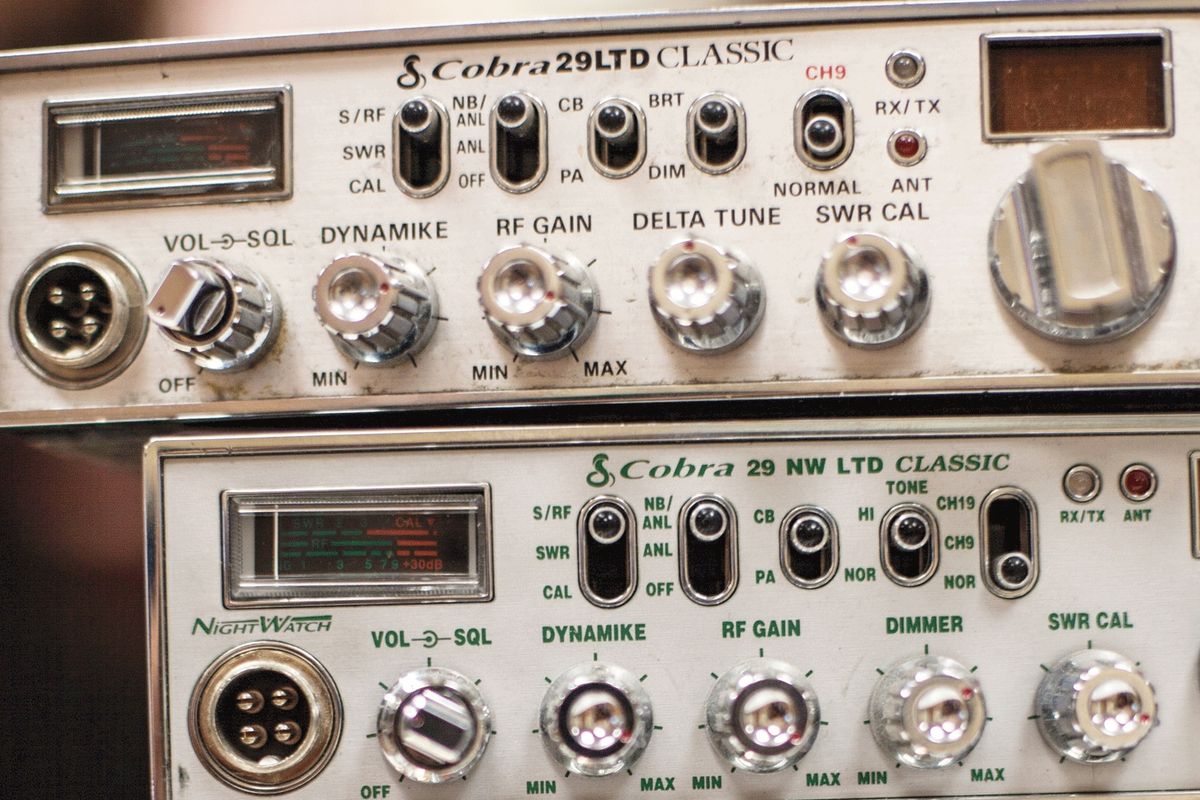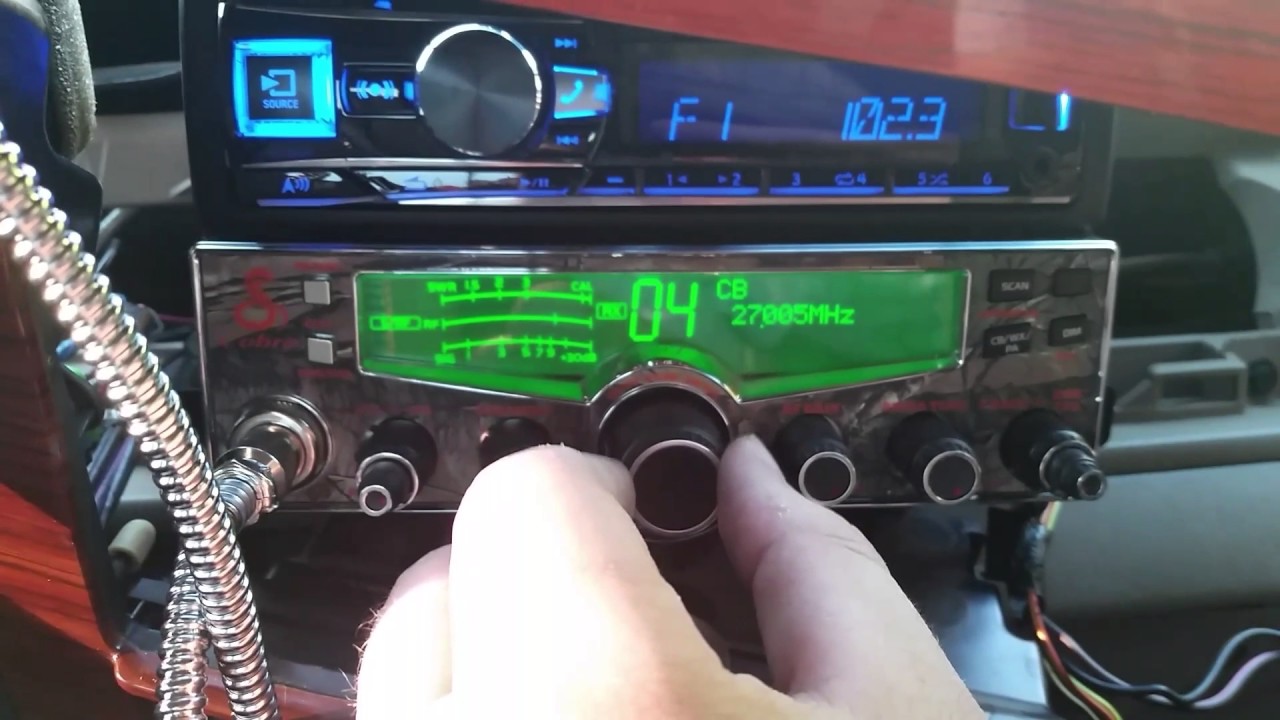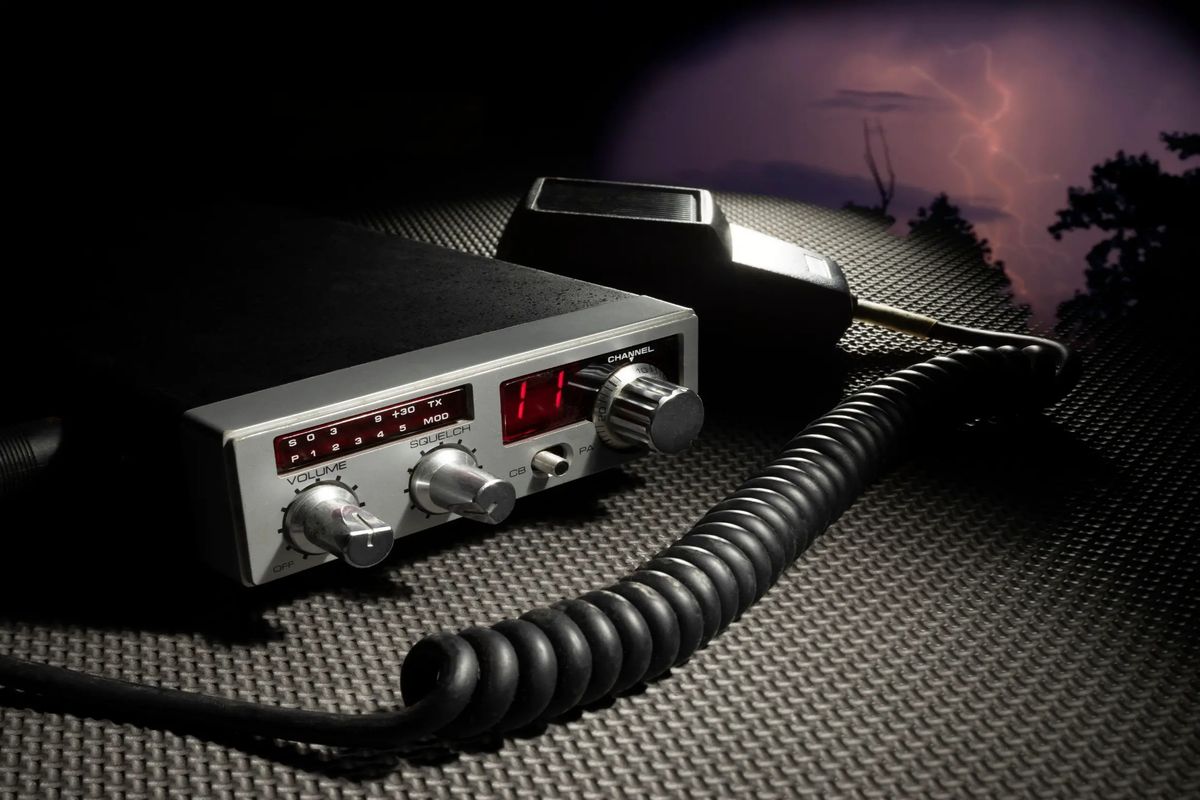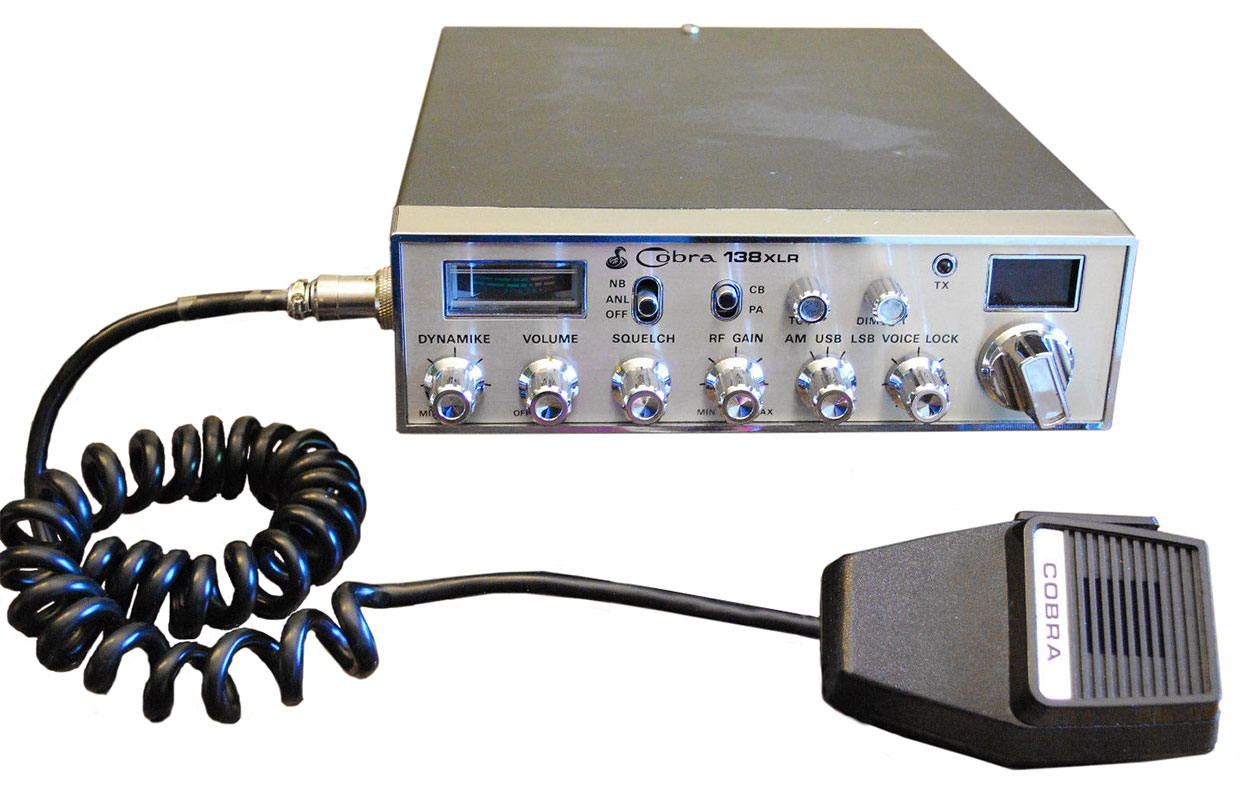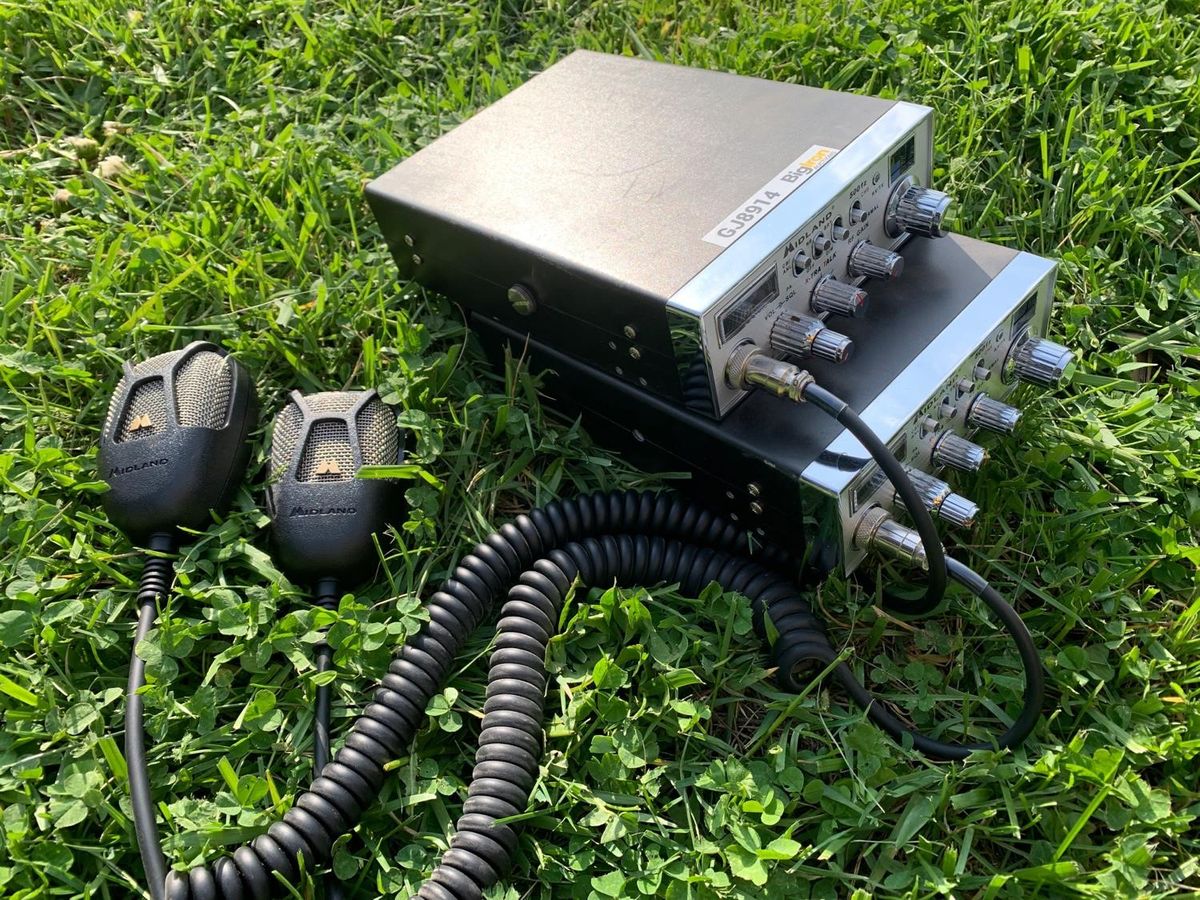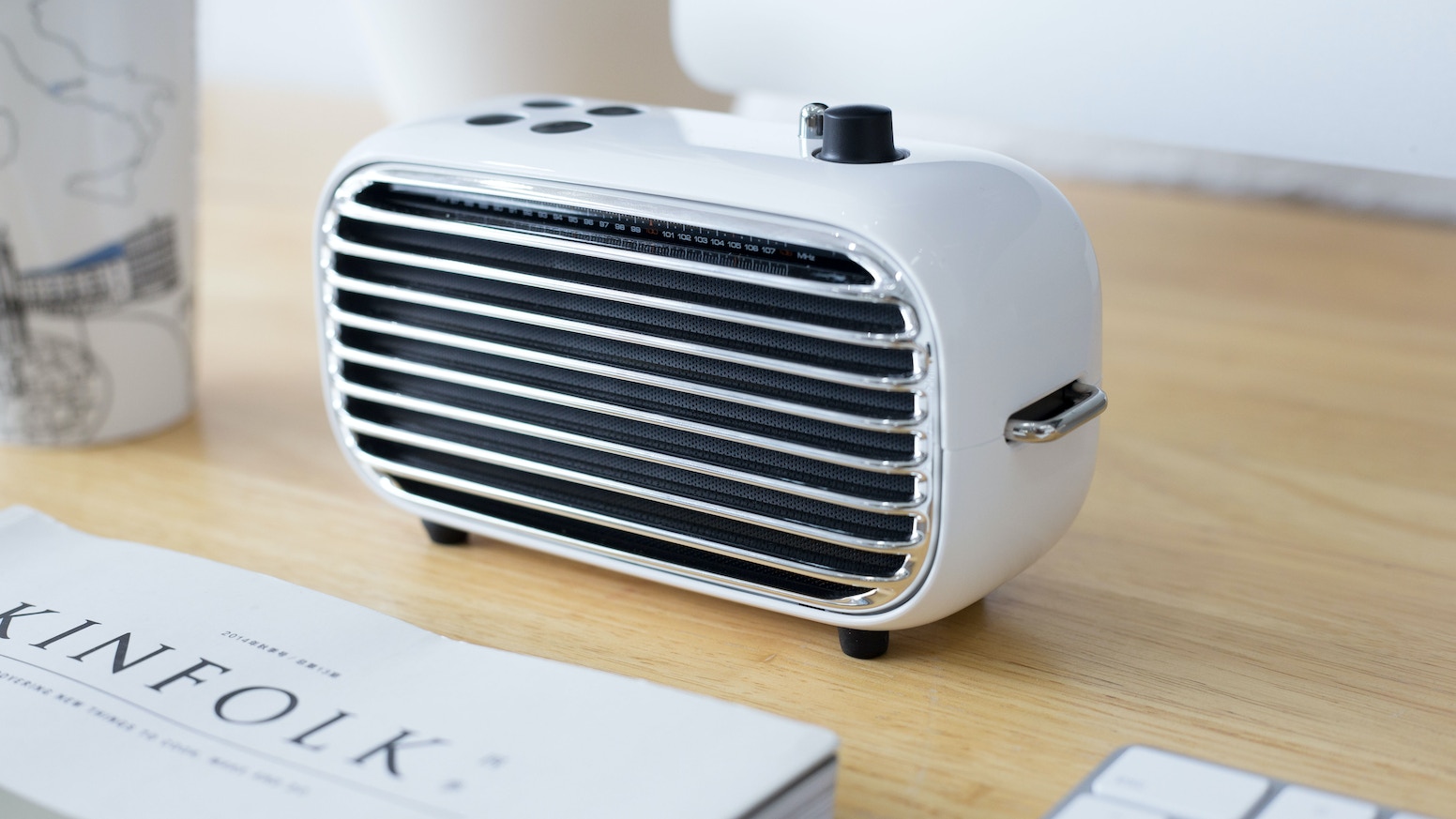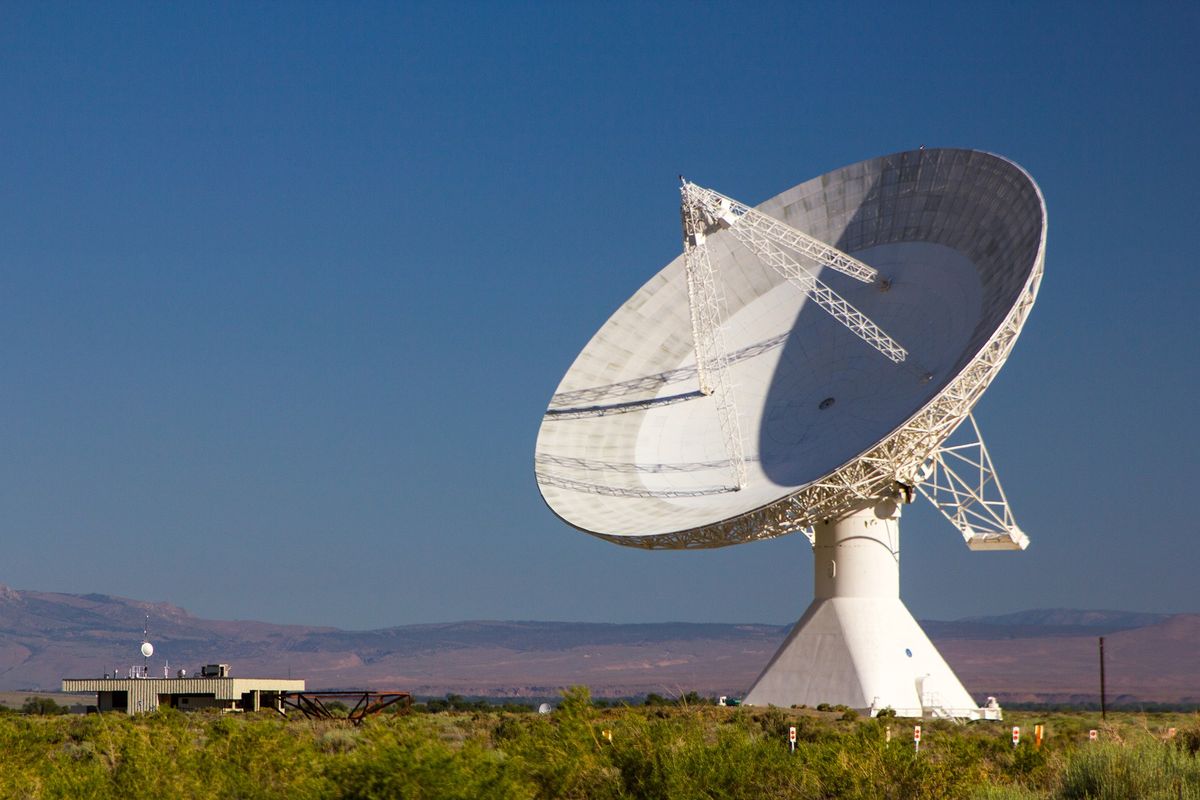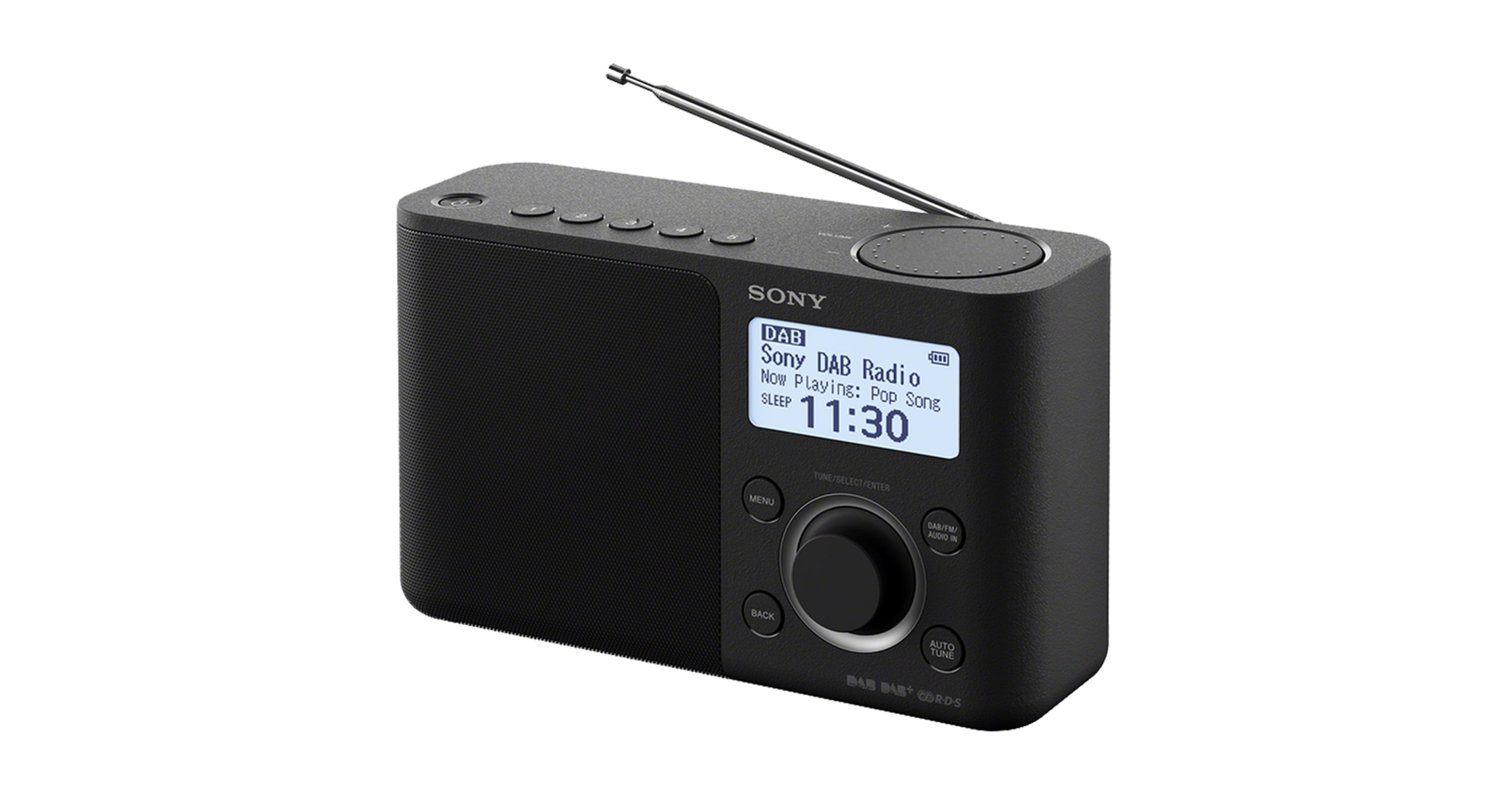Home>Devices & Equipment>Radio>What Is NB/ANL On A CB Radio
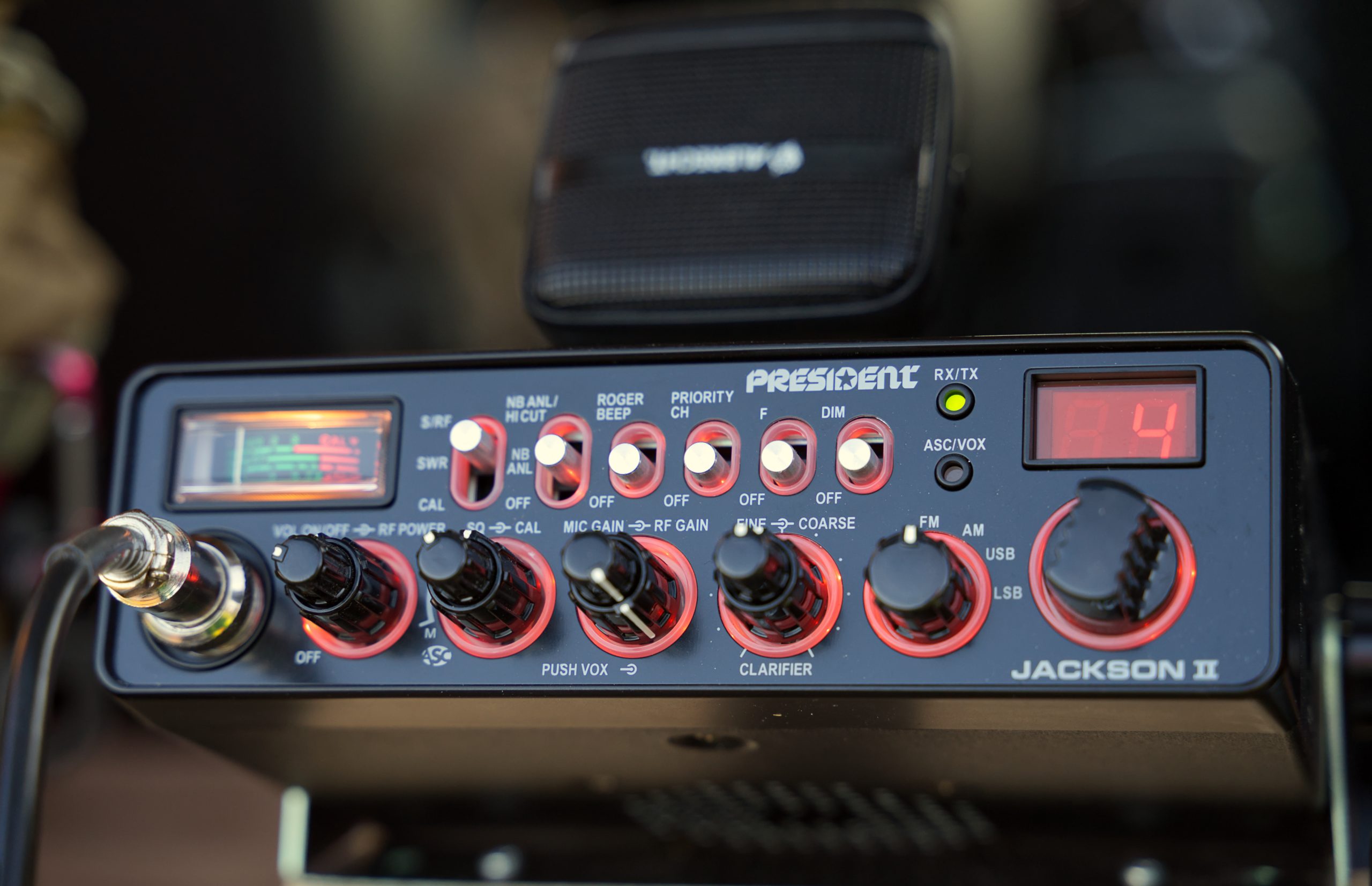

Radio
What Is NB/ANL On A CB Radio
Modified: January 22, 2024
Learn what NB/ANL on a CB radio is and how it improves radio reception. Discover its benefits and how to use it effectively. Enhance your CB radio experience with NB/ANL.[#Radio]
(Many of the links in this article redirect to a specific reviewed product. Your purchase of these products through affiliate links helps to generate commission for AudioLover.com, at no extra cost. Learn more)
Table of Contents
Introduction
In today’s modern world, where technology is constantly evolving, the use of radio communication remains a vital means of communication in various industries. One such form of radio communication is Citizens Band (CB) radio. CB radio allows individuals to communicate wirelessly over short distances, making it widely popular among truckers, off-road enthusiasts, and other hobbyists. One of the key features of a CB radio is the Noise Blanker/Automatic Noise Limiter (NB/ANL) function.
The NB/ANL feature is designed to address the issue of unwanted noise and interference that can often disrupt clear communication. These noises can include engine ignition noise, electrical interference, and background static. The NB/ANL function works to minimize these unwanted sounds, improving the overall audio quality and enhancing the clarity of conversations on the CB radio.
In this article, we will delve into the world of CB radio and explore the NB/ANL feature. We will discuss its functions, benefits, and limitations, as well as provide tips on how to make the most of this feature. Whether you’re a seasoned CB radio user or a newbie looking to understand the intricacies of this technology, this article aims to equip you with the necessary knowledge to optimize your radio communication experience.
Overview of CB Radio
Citizens Band (CB) radio is a form of two-way radio communication that operates on specific frequencies within the 27 MHz band. Initially introduced in the 1940s, CB radio gained popularity in the 1970s and 1980s as a means of communication for truckers on the road. Over time, CB radio has expanded its usage and is now used by a diverse range of individuals, including off-road enthusiasts, hobbyists, and even emergency responders.
CB radios are relatively simple to operate and require no special license or subscription fees. They typically have a range of a few miles, making them suitable for short-distance communication. CB radios allow users to have real-time, voice-based conversations, making it an ideal choice for situations where instant communication is necessary. Moreover, CB radios provide a sense of community among users, enabling them to connect and interact with fellow enthusiasts.
In addition to the basic functionality, CB radios often come equipped with various features and functions to enhance the user experience. These features can include adjustable squelch control, channel scanning, RF gain control, and of course, the Noise Blanker/Automatic Noise Limiter (NB/ANL) function.
Before we delve into the details of the NB/ANL feature, it is essential to understand the foundational aspects of CB radio and its significance in the realm of radio communication. Whether you’re a trucker looking to communicate with fellow drivers or an off-road adventurer seeking reliable communication during your outdoor adventures, CB radio can serve as a reliable and practical solution.
Understanding NB/ANL
The Noise Blanker/Automatic Noise Limiter (NB/ANL) feature is a key component of many CB radios. Its primary function is to reduce unwanted noise and interference during transmissions, resulting in clearer and more intelligible communication. The NB/ANL feature is particularly useful in environments where there is a high likelihood of experiencing electrical interference, engine noise, or other sources of background noise.
The Noise Blanker function is responsible for eliminating or reducing rapid bursts of electrical interference that can disrupt the audio signals. These bursts are often caused by electrical systems and components in close proximity to the CB radio, such as the vehicle’s ignition system or power lines. By quickly detecting and suppressing these bursts of interference, the Noise Blanker helps to maintain a clean and clear audio signal.
On the other hand, the Automatic Noise Limiter function is designed to reduce continuous background noise. This noise can be generated by various sources, including atmospheric conditions, power lines, and electronic devices. The Automatic Noise Limiter works by analyzing the incoming audio signals and automatically adjusting the receiver’s gain to suppress the noise while preserving the desired audio.
By combining both functions, the NB/ANL feature aims to provide users with improved audio quality and enhanced clarity in their communications. It helps to minimize unwanted noise and interference, allowing users to focus on the content of the conversation rather than struggling to discern the message amidst the noise.
Understanding how the NB/ANL feature works is crucial for utilizing it effectively and maximizing its benefits. In the next section, we will dive deeper into the inner workings of NB/ANL and explore its functions in greater detail.
Functions and Benefits of NB/ANL
The Noise Blanker/Automatic Noise Limiter (NB/ANL) feature on CB radios offers several functions and benefits that greatly enhance the user experience. Let’s take a closer look at some of these functions and how they contribute to improved communication:
1. Reduction of Background Noise:
The primary function of the NB/ANL feature is to minimize background noise and interference. Whether it’s electrical interference from the vehicle’s ignition system, static from atmospheric conditions, or background noise from nearby electronic devices, NB/ANL works to suppress these unwanted sounds. By reducing background noise, it allows for clearer and more intelligible communication, ensuring that important messages are transmitted and received without distortion.
2. Enhanced Audio Quality:
By minimizing noise and interference, the NB/ANL feature improves the overall audio quality of communications. It enhances the clarity and intelligibility of voices, making it easier to understand conversations and decipher important information. The improved audio quality enables users to communicate effectively, even in challenging and noisy environments.
3. Increased Signal Strength:
The NB/ANL feature can also help increase the strength of the received signal. By reducing noise and interference, it allows for a stronger and more reliable signal to be heard, even at longer distances. This is particularly useful for users who need to communicate over larger areas or in situations where the signal may be weak or prone to interference.
4. Improved Communication Range:
With clearer audio and reduced interference, the NB/ANL feature can extend the effective communication range of CB radios. Users can communicate with greater clarity and reliability, even when operating near sources of interference or over longer distances. This is beneficial for truckers, off-road enthusiasts, and other users who rely on CB radios for communication during their journeys.
5. Efficient Use of Radio Channels:
By eliminating unwanted noise and interference, the NB/ANL feature optimizes the use of radio channels. Users can communicate more efficiently without the disruption caused by background noise. This allows for a smoother and more seamless conversation, minimizing the need for repetitions and ensuring that messages are transmitted clearly and accurately.
In summary, the functions and benefits of the NB/ANL feature on CB radios are instrumental in improving the quality, clarity, and reliability of communication. By reducing background noise, enhancing audio quality, increasing signal strength, improving communication range, and enabling efficient channel usage, the NB/ANL feature optimizes the CB radio experience for all users.
How NB/ANL Works
The Noise Blanker/Automatic Noise Limiter (NB/ANL) feature on CB radios operates through a combination of circuitry and algorithms specifically designed to minimize unwanted noise and interference. Let’s take a closer look at how NB/ANL works:
Noise Blanker:
The Noise Blanker function works by detecting and suppressing rapid bursts of electrical interference that can disrupt the audio signals. When electrical systems or components in close proximity to the CB radio generate bursts of interference, the Noise Blanker circuitry immediately detects these unwanted signals. It then applies a blanking pulse to suppress the interference, allowing for a cleaner and clearer audio signal to be received and transmitted.
Automatic Noise Limiter:
The Automatic Noise Limiter function operates differently from the Noise Blanker. Instead of targeting rapid bursts of interference, the Automatic Noise Limiter focuses on continuous background noise. It analyzes the incoming audio signals and adjusts the receiver’s gain to suppress the noise while preserving the desired audio. This dynamic adjustment ensures that the background noise is minimized, allowing for clearer and more intelligible communication.
Combination of Functions:
By combining the Noise Blanker and Automatic Noise Limiter functions, the NB/ANL feature effectively reduces both intermittent bursts of interference and continuous background noise. This comprehensive approach improves the overall audio quality, enhances signal strength, and ensures clear and reliable communication.
Automatic Activation:
In most CB radios, the NB/ANL feature is designed to automatically activate when the radio is in use. As soon as a transmission is detected or audio is received, the NB/ANL circuitry engages, working in the background to minimize unwanted noise and interference. This automatic activation ensures a hassle-free experience for users, allowing them to focus on their communication without the need to manually adjust settings.
User Control:
Some CB radios offer users the ability to manually control the level of NB/ANL function. This allows users to customize the feature based on their specific needs and preferences. By adjusting the NB/ANL control, users can optimize the suppression of unwanted noise while maintaining a natural and clear audio signal.
Overall, the NB/ANL feature works seamlessly within CB radios, combining the Noise Blanker and Automatic Noise Limiter functions to reduce interference and background noise. Whether automatically activated or adjusted manually, the feature ensures improved audio quality, increased signal strength, and enhanced communication clarity for users in various environments.
Common Applications and Uses
The Noise Blanker/Automatic Noise Limiter (NB/ANL) feature on CB radios has a wide range of applications and uses, making it a valuable tool for various industries and activities. Let’s explore some of the common applications and uses of the NB/ANL feature:
1. Trucking Industry:
Truckers heavily rely on CB radios for communication on the road. The NB/ANL feature helps truckers communicate clearly and effectively, even in noisy environments, such as busy highways or industrial areas. It minimizes the interference caused by engine noise or electrical systems, allowing for smoother conversations and ensuring that important messages are not lost amidst the noise.
2. Off-Road Adventures:
Off-road enthusiasts, such as 4×4 drivers and outdoor adventurers, often rely on CB radios for communication during their outdoor excursions. Whether it’s trekking through rugged terrain or exploring remote areas, the NB/ANL feature helps reduce background noise and interference, ensuring that signals are clear and communication is maintained, enhancing safety and coordination within the group.
3. Radio Hobbyists:
CB radio enthusiasts, or “hams,” enjoy exploring the capabilities of their radios and engaging in conversations with fellow hobbyists. The NB/ANL feature improves the audio quality and reduces interference, allowing radio hobbyists to communicate with greater clarity and enjoyment. It enhances the overall experience of participating in the CB radio community and connecting with like-minded individuals.
4. Emergency Services:
In emergency situations where reliable communication is vital, the NB/ANL feature on CB radios can be invaluable. Emergency responders, such as search and rescue teams, can rely on the NB/ANL to minimize background noise and interference, ensuring that critical messages are transmitted and received clearly. It helps to maintain effective communication during rescue operations or emergency situations where time and clarity are of utmost importance.
5. Events and Convoys:
CB radios are often used in organized events, convoys, or group activities where communication among multiple participants is necessary. The NB/ANL feature allows for clear and reliable communication between group members, even in noisy or crowded environments. It helps coordinate actions, provide directions, and foster a sense of unity and safety within the group.
In summary, the NB/ANL feature on CB radios finds widespread applications across various industries and activities. From trucking to off-road adventures, radio hobbyists to emergency services, and organized events to group convoys, the NB/ANL feature ensures clear and reliable communication, enhancing safety, coordination, and overall communication quality in countless scenarios.
Tips for Using NB/ANL Effectively
To make the most out of the Noise Blanker/Automatic Noise Limiter (NB/ANL) feature on your CB radio, consider the following tips to ensure effective and optimized usage:
1. Understand Your Environment:
Be aware of the potential sources of interference and background noise in your operating environment. This could include nearby power lines, electronic devices, or other vehicles. Understanding these factors will help you anticipate potential challenges and make the necessary adjustments to maximize the effectiveness of the NB/ANL feature.
2. Position Your Antenna Properly:
A properly positioned antenna can help reduce interference and improve signal reception. Ensure that the antenna is correctly installed and mounted, with the recommended distance from other objects, such as metal surfaces or obstructions. This will help minimize the likelihood of interference and optimize the performance of the NB/ANL feature.
3. Adjust the NB/ANL Control:
Experiment with the NB/ANL control on your CB radio to find the optimal setting for your specific environment. Start with the default or recommended settings and adjust them gradually while monitoring the audio quality. It’s important to strike the right balance between noise suppression and maintaining a natural and clear audio signal. Fine-tuning the NB/ANL control will help you optimize the feature’s performance.
4. Pay Attention to Channel Selection:
Different channels may have varying levels of interference and background noise. Switch between channels and listen for any differences in audio quality. If you encounter heavy interference or background noise on a particular channel, try changing to a different channel to see if it improves. This will help you find a clearer channel and enhance the performance of the NB/ANL feature.
5. Regular Equipment Maintenance:
Ensure that your CB radio and antenna are properly maintained and in good working condition. Regularly check for any loose connections, damaged cables, or other issues that could affect the performance of the NB/ANL feature. Keeping your equipment well-maintained will ensure that it operates at its optimal level and provides the best possible audio quality.
6. Keep Background Noise to a Minimum:
While the NB/ANL feature is designed to reduce unwanted noise and interference, it’s still important to minimize background noise as much as possible. Reduce external distractions, such as noisy fans or other electronic devices, to create a quieter operating environment. This will help the NB/ANL feature work more effectively in reducing interference and improving communication clarity.
By implementing these tips, you can harness the full potential of the NB/ANL feature on your CB radio. Whether you’re on the road, out on an adventure, or communicating in a group setting, using the NB/ANL effectively will ensure clear and reliable communication, enhancing your overall CB radio experience.
Limitations and Considerations
While the Noise Blanker/Automatic Noise Limiter (NB/ANL) feature on CB radios is highly effective in reducing unwanted noise and interference, it is important to be aware of its limitations and consider certain factors when using this feature:
1. Not a Solution for All Noise:
While the NB/ANL feature can significantly reduce many types of unwanted noise and interference, it may not eliminate all sources of noise entirely. In some cases, certain types of interference or background noise may be challenging to remove completely. It is essential to manage expectations and understand that there may still be some residual noise even when utilizing the NB/ANL feature.
2. Impact on Weak Signal Reception:
While the NB/ANL feature can improve audio quality and reduce noise, it may also affect the reception of weak signals. The circuitry and algorithms used to suppress noise can inadvertently reduce the strength of weaker signals. This means that in some instances, you may experience a trade-off between noise reduction and the ability to receive weaker signals effectively. It’s important to find the right balance that suits your specific needs.
3. Compatibility with Other Features:
Some CB radios may have other features, such as RF gain control and squelch control, which can impact the performance of the NB/ANL feature. It is important to understand how these features interact and affect each other. Experimenting with different combinations and settings will help you find the best configuration to optimize the performance of your CB radio.
4. Varied Performance in Different Environments:
The effectiveness of the NB/ANL feature can vary depending on the operating environment. While it may work exceptionally well in some locations, it may not perform as effectively in others. Factors such as the proximity to sources of interference, atmospheric conditions, and nearby electrical systems can impact the overall performance of the feature. It’s important to be adaptable and adjust the settings accordingly to optimize the performance based on the specific environment.
5. User Skill and Experience:
The effective use of the NB/ANL feature may require a certain level of skill and experience. It takes time and practice to understand the nuances of the feature and how it interacts with different environments. As a user, you will need to familiarize yourself with the specific controls and settings of your CB radio to make the necessary adjustments. Stay open to learning and experimentation to maximize the benefits of the NB/ANL feature.
Considering these limitations and factors will help you manage expectations and make the most informed decisions when utilizing the NB/ANL feature on your CB radio. While it is a powerful tool for noise reduction, having a realistic understanding of its capabilities and limitations will ensure a better overall communication experience.
Comparing NB/ANL with Other CB Radio Features
CB radios come equipped with a variety of features designed to enhance communication and improve the overall user experience. While the Noise Blanker/Automatic Noise Limiter (NB/ANL) feature focuses on reducing unwanted noise and interference, it is important to understand how it compares to other features commonly found in CB radios. Let’s explore some key features and understand how they differ from NB/ANL:
Squelch Control:
Squelch control is a feature that helps eliminate background noise when a channel is not in use. It mutes or suppresses the audio until a signal is detected. While squelch control focuses on muting background noise when there is no active transmission, the NB/ANL feature is more comprehensive, as it actively suppresses both background noise and interference during transmissions, resulting in clearer audio quality during conversations.
RF Gain Control:
RF gain control allows users to adjust the sensitivity of the receiver, amplifying or reducing the strength of received signals. The RF gain control is beneficial for amplifying weak signals or reducing the impact of strong nearby signals. While RF gain control can help improve reception, it primarily focuses on signal strength rather than noise reduction. In contrast, the NB/ANL feature suppresses unwanted noise and interference, enhancing communication clarity even in the presence of background noise.
Channel Scanning:
Channel scanning is a convenient feature that allows users to automatically cycle through channels, stopping at active ones. It enables users to quickly find an open channel and join conversations without manually searching. While channel scanning improves the efficiency of finding active channels, it does not specifically address noise and interference reduction. The NB/ANL feature, on the other hand, optimizes audio quality by reducing unwanted noise and interference during transmissions, regardless of the channel.
Public Address (PA) System:
A Public Address (PA) system is a feature that enables the CB radio’s audio output to be routed through an external speaker or PA speaker, for broadcasting announcements or communication to a larger audience. While the PA system facilitates public address functions, it does not directly impact noise reduction or enhance audio clarity during regular voice communications. The NB/ANL feature, however, specifically focuses on reducing unwanted noise and interference, resulting in clearer audio quality during conversations.
Weather Channels and Alerts:
Many CB radios offer weather channels and alerts, allowing users to receive real-time weather updates and emergency alerts. While weather channels and alerts are crucial for staying informed about changing weather conditions, they do not directly address noise reduction or improve communication clarity. The NB/ANL feature, on the other hand, actively targets and suppresses unwanted noise and interference, ensuring clearer audio transmission and reception.
While other features in CB radios offer their unique functionalities, the NB/ANL feature stands out for its ability to reduce unwanted noise and interference, improving the overall audio quality and communication clarity. By combining the NB/ANL feature with other functions like squelch control and RF gain control, users can create a comprehensive communication setup that optimizes both audio clarity and signal strength, ensuring a seamless and effective CB radio experience.
Conclusion
The Noise Blanker/Automatic Noise Limiter (NB/ANL) feature plays a vital role in enhancing the communication experience of CB radio users. With its ability to reduce unwanted noise and interference, the NB/ANL feature improves audio quality, increases signal strength, and enhances communication clarity. It finds its applications in various industries and activities, such as trucking, off-road adventures, hobbies, and emergency services. By minimizing background noise and interference, the NB/ANL feature ensures that important messages are transmitted clearly and without distortion.
While utilizing the NB/ANL feature, it is essential to be aware of its limitations. It may not eliminate all sources of noise completely, and adjusting the NB/ANL control requires a balance between noise suppression and maintaining a natural audio signal. Understanding the operating environment, properly positioning the antenna, and regularly maintaining the equipment are crucial considerations for optimizing the performance of the NB/ANL feature.
When comparing the NB/ANL feature with other common features found in CB radios, such as squelch control, RF gain control, channel scanning, public address system, and weather channels, it becomes evident that the NB/ANL feature directly focuses on noise reduction and interference suppression. Its ability to enhance audio quality, reduce background noise, and improve communication clarity sets it apart as a valuable tool for CB radio users.
In conclusion, the Noise Blanker/Automatic Noise Limiter (NB/ANL) feature is a powerful asset for improving the communication experience on CB radios. Whether you are a trucker, an off-road enthusiast, a radio hobbyist, or a member of the emergency services, the NB/ANL feature ensures clearer and more reliable communication. By understanding its functions, optimizing its usage, and considering its limitations, users can maximize the benefits of the NB/ANL feature and enjoy a seamless and effective CB radio experience.

